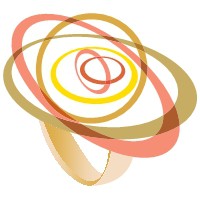Stephen Brookfield has brought to the world of education a wealth of literature from his research in adult learning, teaching and critical thinking. Brookfield believes teachers do what they do to “change the world” (1995, p. 1). Brookfield suggests, through their own practice, teachers model respect, democracy and justice in the hope students will learn to treat each other and the environment with kindness, acceptance and equality. Brookfield goes on to suggest this is a somewhat innocent view of teaching and warns:
One of the hardest things teachers have to learn is that sincerity of their intentions does not guarantee the purity of their practice (1995, p. 1)
Brookfield believes that to teach in such an “innocent” manner is to ignore the intricacies of “cultural, psychological and political” influences on the learning process. Brookfield believes these complexities together with the fragile dynamics of “power” leads to the potential for oppression, which means teaching can never be innocent (1995, p. 1).
Central to Brookfield’s model is the exposure of assumptions which he believes all teachers have, and suggests teachers can never have complete consciousness of their reasoning and motivation or accurate perception of how students see and interpret their practice (1995, p. 1). Brookfield suggests this lack of complete consciousness can lead to teachers into a state of what he terms “demoralization” and “ self-laceration” when intent does not go according to plan and leads to a cycle of blame and feelings of failure; even when according to Brookfield “… it is not of our own making” (1995, p. 2).
Brookfield classifies three categories of assumptions: Paradigmatic, prescriptive and casual. Paradigmatic assumptions, Brookfield suggests, are the most difficult to expose and may not be recognised as assumptions even when they have been pointed out, but are the conceptual adages teachers use to “order the world”. Brookfield describes prescriptive assumptions as reflective thoughts about what “ought to be happening” in a given context, whilst casual assumptions, Brookfield suggests are predictive and enable understanding of how word situations connect with teaching and learning. Casual assumptions Brookfield claims, are the easiest to expose (1995, p 2:3).
Reflective practice alone according to Brookfield is not enough to expose these assumptions – in particular, the paradigmatic and prescriptive assumptions that teachers often see as common sense assumptions. Although Brookfield acknowledges the value of reflective practice, critical reflection, he advocates, will almost certainly help expose “paradigmatic, structuring assumptions (1995, p. 8).
The latter type of assumptions Brookfield refers to as “hegemonic”. He goes on to suggest:
… teachers take pride in acting on the very assumptions that work to enslave them. In working diligently to implement these assumptions, teachers become willing prisoners who lock their own cell doors behind them (1995, p. 13).
Those teachers who reflect critically, according to Brookfield, “see the insanity of aspiring to ways of teaching that, in the end, seriously threaten their own well-being” (1995, p.28).
Brookfield believes that to be critically reflective and expose assumptions and hegemony, requires that teachers explore what they do from as many alternative perspectives as is possible. To do this Brookfield advocates a model of critical reflection whereby the teacher stands outside their immediate self and view what they do through four discrete lenses. Each lens reveals a different aspect of practice such as that when they are combined “they throw into sharp relief the contours of our assumptive clusters (1995, p. 28).
The first of the discrete lenses is the teacher’s own autobiography as both a teacher and learner, which Brookfield suggests, brings about an awareness of paradigmatic assumptions that frame how the teacher works. The teacher assessing their own practice through “student’s eyes” is the second of Brookfield’s four lenses which enables teachers to identify the power dynamics of their relationships as well as checking students’ perception of the teacher’s own intent. Brookfield refers to the third lens as “Our colleagues experiences” enabling teachers to gain a new perspective to their practice by inviting colleagues to become critical friends who watch their practice and engage in critical dialogue. Brookfield’s final lens is that of “theoretical literature”. Through this lens Brookfield suggests the teacher can understand their own ideological experiences through multiple understandings (1995, p.p. 29:30). Although any one of these lens may prove beneficial as a tool for reflection, Brookfield’s intention is that they are used as a whole to give multiple perspectives.
Next time Brookfield’s critique of his own theory.


